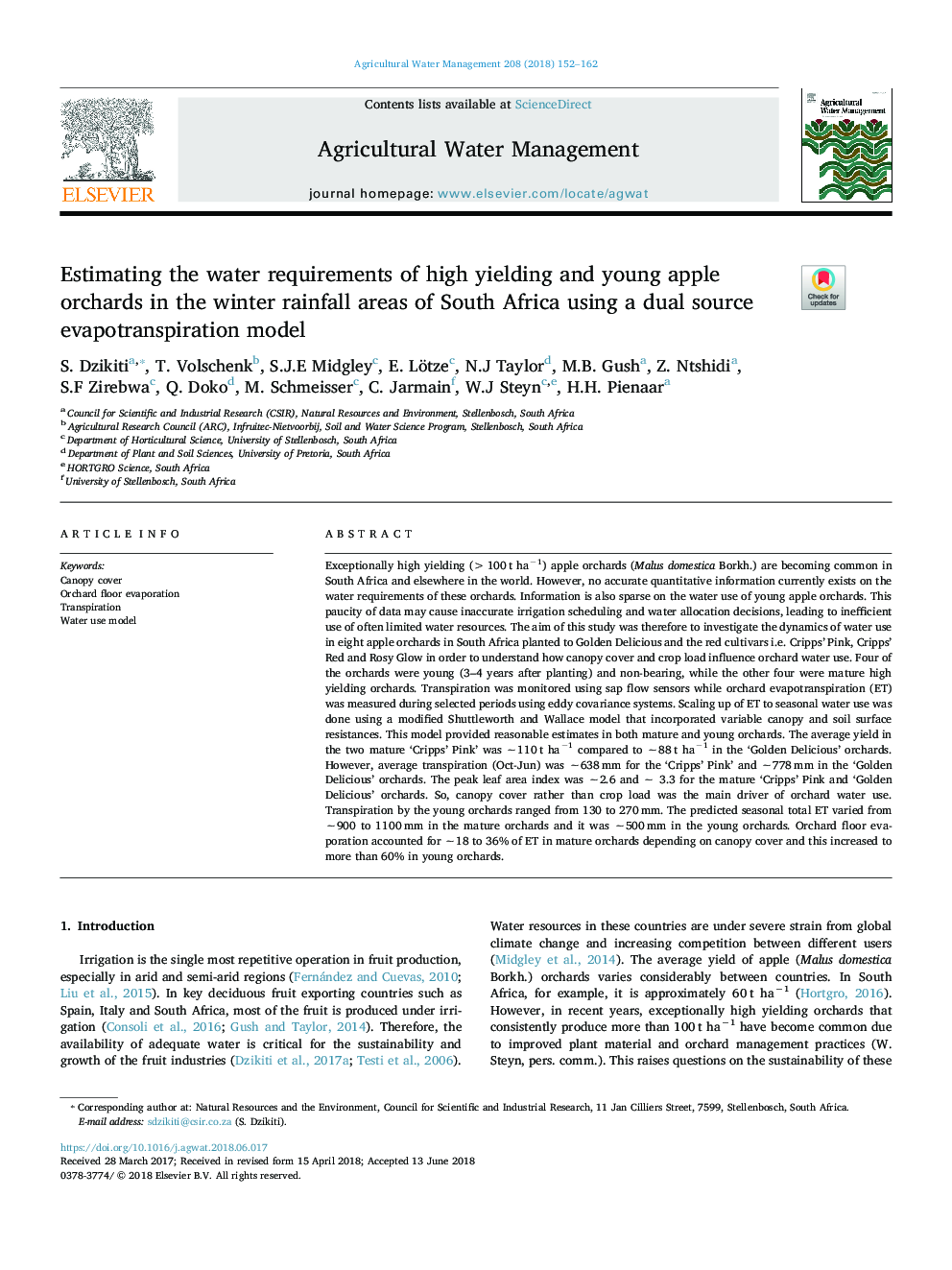| Article ID | Journal | Published Year | Pages | File Type |
|---|---|---|---|---|
| 8872765 | Agricultural Water Management | 2018 | 11 Pages |
Abstract
Exceptionally high yielding (>100â¯t haâ1) apple orchards (Malus domestica Borkh.) are becoming common in South Africa and elsewhere in the world. However, no accurate quantitative information currently exists on the water requirements of these orchards. Information is also sparse on the water use of young apple orchards. This paucity of data may cause inaccurate irrigation scheduling and water allocation decisions, leading to inefficient use of often limited water resources. The aim of this study was therefore to investigate the dynamics of water use in eight apple orchards in South Africa planted to Golden Delicious and the red cultivars i.e. Cripps' Pink, Cripps' Red and Rosy Glow in order to understand how canopy cover and crop load influence orchard water use. Four of the orchards were young (3-4 years after planting) and non-bearing, while the other four were mature high yielding orchards. Transpiration was monitored using sap flow sensors while orchard evapotranspiration (ET) was measured during selected periods using eddy covariance systems. Scaling up of ET to seasonal water use was done using a modified Shuttleworth and Wallace model that incorporated variable canopy and soil surface resistances. This model provided reasonable estimates in both mature and young orchards. The average yield in the two mature 'Cripps' Pink' was â¼110â¯t haâ1 compared to â¼88â¯t haâ1 in the 'Golden Delicious' orchards. However, average transpiration (Oct-Jun) was â¼638â¯mm for the 'Cripps' Pink' and â¼778â¯mm in the 'Golden Delicious' orchards. The peak leaf area index was â¼2.6 and â¼ 3.3 for the mature 'Cripps' Pink and 'Golden Delicious' orchards. So, canopy cover rather than crop load was the main driver of orchard water use. Transpiration by the young orchards ranged from 130 to 270â¯mm. The predicted seasonal total ET varied from â¼900 to 1100â¯mm in the mature orchards and it was â¼500â¯mm in the young orchards. Orchard floor evaporation accounted for â¼18 to 36% of ET in mature orchards depending on canopy cover and this increased to more than 60% in young orchards.
Keywords
Related Topics
Life Sciences
Agricultural and Biological Sciences
Agronomy and Crop Science
Authors
S. Dzikiti, T. Volschenk, S.J.E Midgley, E. Lötze, N.J Taylor, M.B. Gush, Z. Ntshidi, S.F Zirebwa, Q. Doko, M. Schmeisser, C. Jarmain, W.J Steyn, H.H. Pienaar,
